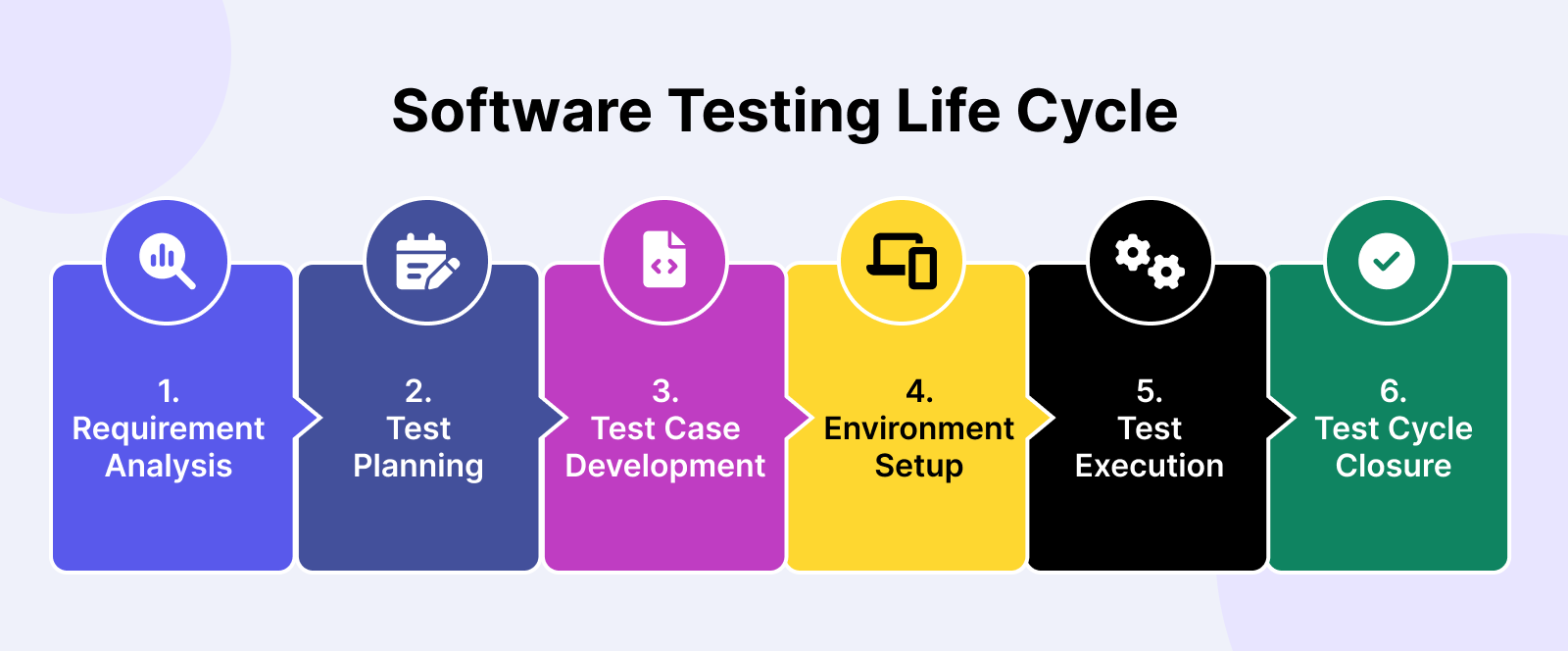STLC: A Comprehensive Guide
Continuing from our previous post regarding the software development lifecycle, in the realm of software development, ensuring the quality and reliability of a product is paramount.
This is where the Software Testing Life Cycle (STLC) comes into play, serving as a structured framework to guide testing activities from inception to delivery. In this comprehensive guide, we'll delve into each phase of the STLC, shedding light on its significance and the key activities involved.
Phase 1: Requirement Analysis
Before embarking on any testing endeavor, it's crucial to have a deep understanding of the software requirements. During this phase, testers collaborate closely with stakeholders to analyze and dissect the requirements meticulously. The aim is to ensure clarity, completeness, and feasibility, laying the groundwork for the testing process ahead.
Phase 2: Test Planning
With the requirements thoroughly analyzed, the next step is to devise a robust testing strategy. Test planning involves outlining the scope, objectives, resources, and timelines for testing. Test plans are crafted to delineate the testing approach, test deliverables, environments, and entry/exit criteria for each testing phase. A well-defined test plan serves as a roadmap, guiding testing efforts towards achieving the desired quality goals.
Phase 3: Test Case Development
Test cases are the building blocks of effective testing. During this phase, testers translate the requirements and test scenarios into detailed test cases. Each test case outlines the steps to be executed, the expected outcomes, and any prerequisites or dependencies. Test data and scripts are also prepared to support the execution of test cases.
Phase 4: Environment Setup
Creating a conducive testing environment is paramount for accurate and reliable testing. Testers establish a test environment that mirrors the production environment as closely as possible. This involves configuring hardware, software, networks, databases, and other components necessary for testing. A well-prepared test environment lays the foundation for seamless testing execution.
Phase 5: Test Execution
The heart of the testing process lies in test execution. Testers execute the prepared test cases in the designated testing environment. They meticulously follow the steps outlined in the test cases, record test results, and document any defects encountered during testing. Functional and non-functional aspects of the software are thoroughly evaluated to ensure adherence to quality standards.
Phase 6: Defect Tracking and Management
Defects are inevitable in the software development process. During test execution, testers diligently log any defects identified in a defect tracking system. Each defect is assigned a severity and priority level, guiding the development team in addressing them promptly. Testers verify resolved defects to ensure they have been adequately fixed, maintaining the integrity of the software.
Phase 7: Test Reporting
Effective communication is key in testing. Test reports are generated to convey the progress, results, and metrics of testing activities. These reports provide stakeholders with valuable insights into test coverage, pass/fail rates, defect metrics, and recommendations for further action. Transparent and comprehensive test reporting facilitates informed decision-making and fosters collaboration among project stakeholders.
Phase 8: Regression Testing
As the software evolves, regression testing becomes imperative to safeguard against unintended consequences. Testers conduct regression testing to ensure that new changes or fixes haven't introduced regressions or side effects in the software. Selected test cases from previous test cycles are re-executed to validate the stability and reliability of the system.
Phase 9: Test Closure
As testing activities draw to a close, it's essential to wrap up the testing process systematically. Test closure involves finalizing test documentation, archiving test assets, and conducting a lessons learned session to glean insights for future improvement. Approval to release the software is sought, marking the culmination of the testing journey.
Phase 10: Post-Release Support
Even after the software is released into the wild, testing endeavors persist. Testers continue to address any issues or defects reported by users in the production environment. These issues are prioritized, investigated, and remediated to uphold the software's quality and enhance user satisfaction.
In essence, the Software Testing Life Cycle serves as a guiding beacon, steering testing efforts towards ensuring the delivery of high-quality software products. By embracing the structured approach outlined in the STLC, organizations can bolster their testing endeavors, mitigate risks, and deliver software that meets the evolving needs and expectations of users.

